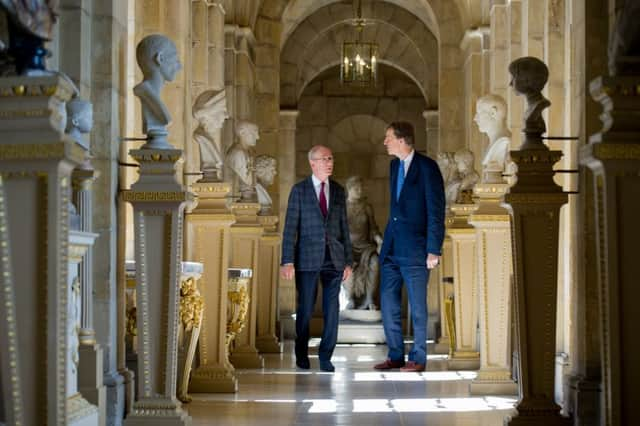Castle Howard haul stays put in £5m tax deal


Under the “in situ” provision of the government’s century-old Acceptance in Lieu scheme, the collection will remain at Castle Howard, where it has been on view for 250 years, but its ownership will be transferred to National Museums Liverpool.
The haul includes 62 Roman pieces and 27 associated items assembled in the 18th century by Henry Howard, on a “grand tour” of Rome, Florence and Venice.
Advertisement
Hide AdAdvertisement
Hide AdThe deal follows a similar arrangement last summer, when a portrait by Sir Joshua Reynolds of Howard’s son Frederick, the fifth earl, was accepted for the nation in lieu of £4.7m tax.
A year earlier, nine of Castle Howard’s artworks raised £12.7m at an auction to raise funds for the upkeep of the property. One painting, Ferdinand Bol’s Portrait of a Boy, dating from 1652, was made the subject of a temporary government export ban after a bidder paid £5.2m for it.
Under the terms of the Acceptance in Lieu scheme, anyone who is liable for an inheritance tax bill can offer an object in whole or part or whole payment. In the last decade, pieces valued at nearly £320m have been accepted, settling tax bills of just under £200m.
The Arts Council said last night that the newly acquired Castle Howard collection - the largest of its type to fall within the scheme - was “an excellent example of the collecting practices of British aristocrats and travellers” and confirmed the enduring appeal of Roman artefacts.
Advertisement
Hide AdAdvertisement
Hide AdIt added: “The Castle Howard collection was already considered exceptional for its size and importance in the eighteenth century and it remains a highly important group of Roman sculpture today.”
Dr Christopher Ridgeway, the curator at Castle Howard, said the arrangement ensured that the public could continue to view the collection in its intended surroundings.
He said: “The objects compliment the house, and the scheme allows that relationship to be maintained and for the items to be appreciated in the context of this building, which is still the home of the family that collected them two and a half centuries ago.”
He added that although the Liverpool museum would not take possession of the artworks, it would benefit from the arrangement.
Advertisement
Hide AdAdvertisement
Hide Ad“They like the idea of partnership with a major house in the north,” he told The Yorkshire Post. “They already have a very significant collection, probably the biggest outside London, and this is a significant addition. If Liverpool wanted to borrow one or two items that would be fine.”
Sharon Granville, the museum’s executive director of collections, said: “We are delighted that these immensely important sculptures have been saved for the nation and that they will remain in the magnificent surroundings of Castle Howard.”
The arts minister, John Glen, added: “I am pleased that through the Acceptance in Lieu scheme, this diverse collection will remain on public display at Castle Howard for years to come.”
Nicholas Howard, who took over the day-to-day running of the house in 2014 from his younger brother, Simon, said the arrangement with the Liverpool institution was “an exciting northern partnership”.